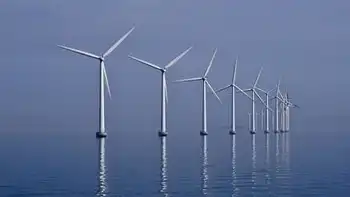Darlington has edge for new nuclear plant
By Toronto Star
High Voltage Maintenance Training Online
Our customized live online or in‑person group training can be delivered to your staff at your location.

- Live Online
- 12 hours Instructor-led
- Group Training Available
The Liberal government plans to build Ontario's first new nuclear reactors in 15 years at the same sites as existing nuclear stations as part of a 20-year, $60-billion electricity supply plan. The two new reactors are expected to cost about $26 billion in total.
The province will decide by the end of June whether the first reactor will be built at Darlington and run by government-owned Ontario Power Generation, or at the privately owned Bruce Nuclear Plant near Kincardine.
Phillips said Hydro One, the government-owned transmission utility, is currently before the Ontario Energy Board seeking to enhance the Bruce-to-Milton transmission line.
"That (line) is one of the major constraints," Phillips said. "So that is a challenge, finding transmission out of Bruce. There's a certain advantage Darlington has there."
Phillips said the lack of transmission capacity from Lake Huron is also holding up about 1,000 megawatts of wind-power projects planned for southwestern Ontario.
"There's a bonus to that transmission line proceeding, and that is it'll give us a lot more clean, renewable energy," he said.
The limited transmission capacity also means OPG has a slight edge over Bruce Power when it comes to being the operator of the new station, but the New Democrats said today it doesn't really matter whether the nuclear plants are publicly or privately operated.
"From my perspective, it's six of one, half-dozen of the other," said NDP Leader Howard Hampton. "I think the real problem is it should be a public process, and it won't be. People know how much it's going to cost."
The Conservatives said they would prefer to see the private operators of the Bruce power station given the chance to operate a new reactor instead of sticking with OPG, which they noted has a history of cost overruns and delays on nuclear projects.
"I think having both sides as part of the equation and making the determination on which is best going to perform for the future security needs of the province (makes sense)," said Opposition Leader Bob Runciman. "My own bias is on the private side of it. I think they've done an outstanding job in Bruce."
After Phillips announces his site location and operator for the new nuclear reactor later this month, he will wait until the end of the year before choosing from three competing companies: Atomic Energy of Canada Ltd., American giant Westinghouse and French company AREVA NP.
As more countries consider building new nuclear plants for the first time in decades, construction and labour costs are being driven up around the world.
But Phillips said he isn't worried about rising construction costs, adding he is confident Ontario can negotiate a deal to protect consumers from cost overruns.
"I think we've got a good process for making sure we get the best possible deal," he said. "I think securing an Ontario plant is something any one of the (three competitors) would very much like, and I think that will help put a little downward pressure on the price."
But Hampton warned the public not to be fooled again by promises of on-budget and on-time nuclear projects, saying they always come in "way over" budget.
"Darlington was supposed to cost $4 billion, (but) when it was finally finished it cost almost $15 billion," Hampton said. "Most of our $20-billion hydro debt in Ontario is the result of nuclear plants that were built in the 1960s, '70s and '80s, and haven't been paid for yet."











